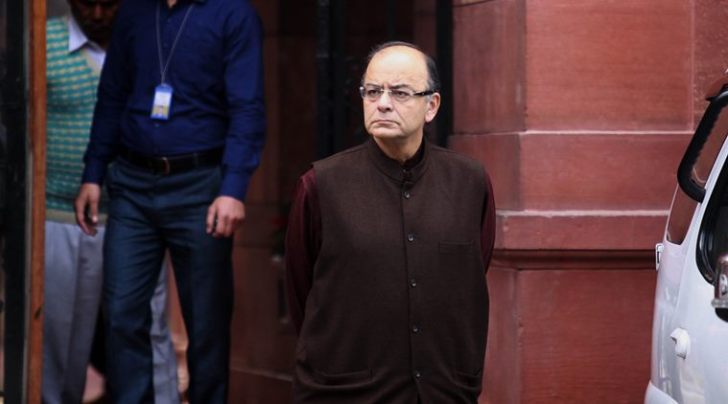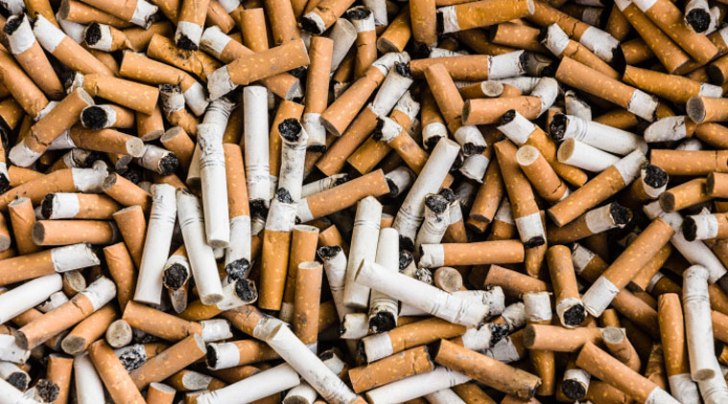- India
- International
All that was announced in Arun Jaitley’s Union Budget 2015
This was the first full-fledged budget presented by the Narendra Modi administration
 Union Minister Arun Jaitley after a cabinet meeting at PMO South Block in New Delhi on Wednesday. (Express Photo by Prem Nath Pandey)
Union Minister Arun Jaitley after a cabinet meeting at PMO South Block in New Delhi on Wednesday. (Express Photo by Prem Nath Pandey)
The 2015 Union Budget last year was the first full-fledged budget presented by the Narendra Modi administration after it was sworn to power in the Lok Sabha elections of 2014. Finance Minister Arun Jaitley, who is also the leader of the NDA in Rajya Sabha, presented the budget on February 28.
As another budget, quite crucial to the implementation of the economic agenda of the present government, comes closer, we take a look at the some of the highlights and major measures announced in the 2015 budget.
Hike in excise duty on specific products
The government hiked the excise duty on cigarettes, tobacco products, packed condensed milk, peanut butter, making the consumption of these products more expensive. “Excise duty is being increased by 25 per cent for cigarettes of length not exceeding 65 mm and by 15 per cent for cigarettes of other lengths. Similar hikes have been proposed on cigars, cheroots and cigarillos,” the Budget 2015-16 said. In terms of benefits, the government has made it cheaper to buy leather footwear above Rs 1,000 per pair, reducing excise duty on them to 6 per cent from 12 per cent. Similarly, inputs for manufacture of LED drivers has also been halved to 6 per cent.

Service tax hiked
By increasing the service tax from the current 12.36% to 14%, eating out, using credit and debit cards, cabs and mobile phones all became expensive.
The FM said education cess and secondary and higher education cess shall be subsumed into the new service tax rate.

The decision made several services including cable and DTH services, beauty parlour charges, courier service, laundry services, ordering stock broking, asset management and insurance more expensive. Packaged fruits and vegetables will, however, become cheaper as pre-cooling, ripening, retail packing and labelling of these items have been exempted from the service tax.
Ports urged to go corporate
Finance Minister Arun Jaitley said in his budget speech that all public sector ports owned by the Union government will be encouraged to convert into corporate entities from a trustee setup to bring about operational efficiency and financial autonomy.
It is to ensure that all major ports are able to efficiently compete with private sector ports, the FM said.
Focus on cooperative federalism
Accepting the recommendation of the 14th Finance Commission, the Union government raised the tax devolution to states from 32 per cent to 42 per cent of the shareable pool. This measure was welcomed as fundamentally restructuring the architecture of federal fiscal relations in the country.
The education cess has been absorbed as an increase in the service tax rate from 12 per cent to 14 per cent, bringing it into the shareable pool. The service tax base has also been broadened and exemptions reduced. On the other hand, replacing the wealth tax by a 2 per cent surcharge on the “super rich” takes it out of the shareable pool.
These steps by the government were seen as giving more power to the states.
Delhi government allocation
There was a 21 percent increase in the allocation of the central assistance for the Delhi government in the 2015 budget. The normal assistance of Rs 394.99 crore was an increase of Rs 69.99 crore since the 2014-15 allocation.
The non-plan grant for share in central taxes and duties of Delhi was proposed at Rs 325 crore for the 2015-16 financial year.
Allocation for Ganga cleaning
The government increased the allocation for Ganga cleaning from Rs 1,500 crore last year to Rs 2,100 crore, all of which would come from the clean energy fund that is raised through the cess on coal. The FM doubled this cess further from Rs 100 per tonne to Rs 200 per tonne. Only last year, this was increased from Rs 50 per tonne to Rs 100 per tonne.
At the end of the last year, the clean energy fund had more than Rs 3,000 crore in its kitty. Ganga cleaning is the only programme in the water sector that has received a major boost in funding.

More funds for roads, railways
The FM proposed increased allocation of Rs 70,000 crore in the sector in 2015-16 over the current year. While the allocation in roads sector was increased by Rs 14,031 crore, in the railways it went up by Rs 10,050 crore.
The move was seen as intent to increase public expenditure in infrastructure projects. While Nitin Gadkari is the surface transport minister, Suresh Prabhu handles the Railway ministry.
The Finance Minister also announced the formation of a National Investment and Infrastructure Fund and said he would permit tax-free bonds for raising resources for rail, road and irrigation projects.
Tax sops to factories for hiring new workers
In order to boost job creation in the country, the government said manufacturing firms will get additional tax benefits if they employ 50 new regular workers.
At present, under the Section, manufacturing units are eligible for an income tax deduction of up to 30 per cent of the additional wages paid to the new workmen employed for three assessment years. However, the provision is at present available only to firms that employ 100 new workers in a fiscal.
MUDRA Bank
The government announced that it would set up MUDRA, a bank to finance the setting up of small and micro-units and thereby encourage entrepreneurship among SC/STs and OBCs.
While presenting the budget, the FM said the government would set up the Micro Units Development Refinance Agency (MUDRA) Bank with a corpus of Rs 20,000 crore and a credit guarantee corpus of Rs 3,000 crore. The Mudra Bank will refinance institutions through the newly-announced Pradhan Mantri Mudra Yojana.
 Modi at the launch of the Pradhan Mantri MUDRA Yojana in New Delhi Wednesday. (Express Photo by: Prem Nath Pandey)
Modi at the launch of the Pradhan Mantri MUDRA Yojana in New Delhi Wednesday. (Express Photo by: Prem Nath Pandey)
Flagship for micro-irrigation
The government allocated funds for a new Pradhan Mantri Krishi Sinchai Yojana (PMKSY) aimed at ensuring access to water to every farm (“Har Khet Ko Pani”) and improving water use efficiency (“Per Drop More Crop”). The total allocation to PMKSY for 2015-16 has been budgeted at Rs 5,300 crore, which includes Rs 1,800 crore towards micro-irrigation. The remaining sums have been drawn mainly from old schemes such as the erstwhile Integrated Watershed Management Programme and the Acceleration Irrigation Benefit and Flood Management Programme.
Other key points
* There was no change in personal Income Tax
* Additional 2 percent surcharge on people earning over Rs 1 crore; to fetch Rs 9,000 crore
* Wealth tax abolished
* To lower Corporate Tax to 25% over next four years
* To achieve fiscal deficit of 3% of GDP by 2017-18
* Fiscal Deficit target 3.9% in 2015-16, 3.5% in 2016-17
* Revenue Deficit to be 2.8% in 2015-16
* Current Account Deficit for 2014-15 to be below 1.3% of GDP
* To introduce comprehensive law to deal with black money
* 100% deduction for contribution to Swachh Bharat, Clean Ganga projects
* GST to be put in place by April 1, 2016
* Internationally competitive direct tax regime to be put in place to incentivise saving
* Incentivise use of credit, debit cards; disincentivise cash transaction to curb black money.
Apr 26: Latest News
- 01
- 02
- 03
- 04
- 05































